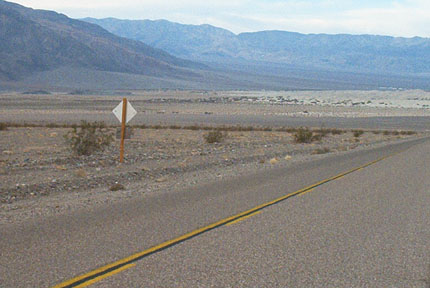
Surface deposits are usually thin "blankets" of semi- or unconsolidated material overlying hard bedrock. In the photo below everything in the floor of Death Valley is considered a surface deposit. Such deposits include alluvium (the gray aprons of sediment on the far side of the valley and under the road) or modern stream deposits (from floods etc.); wind-blown deposits (dunes or loess shown in the middle of the photo as lighter colored material); landslides, rock falls and other mass wasting deposits. Some geologic maps (especially those covering large areas) don't show surface deposits, but they are important especially in building projects and earthquake hazard assessments.